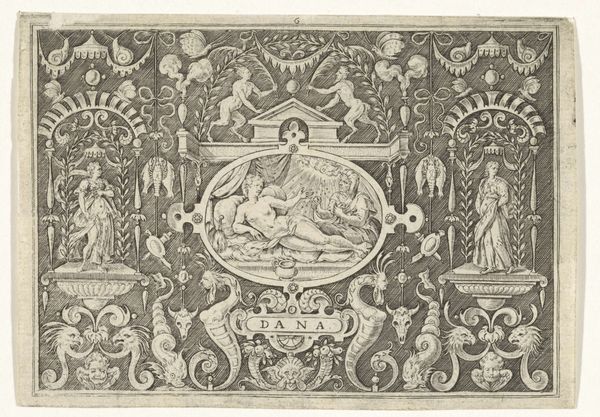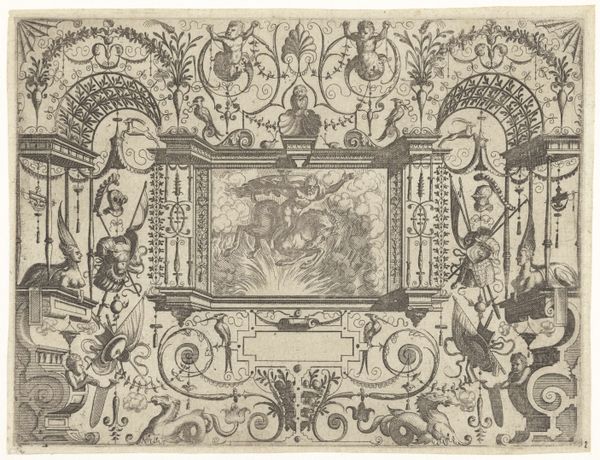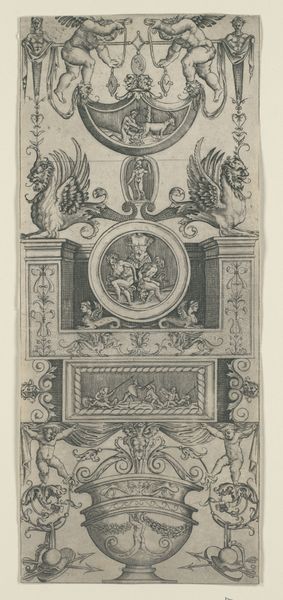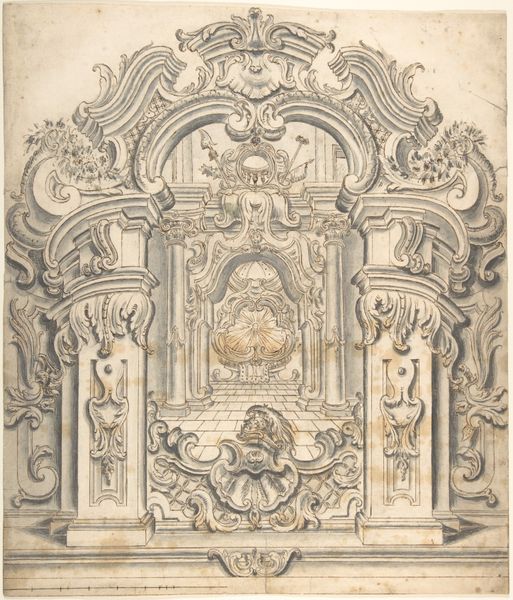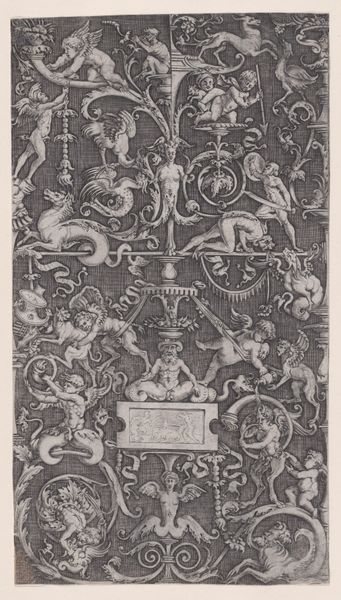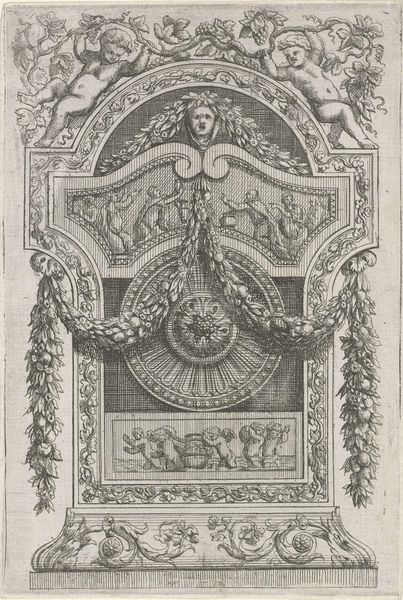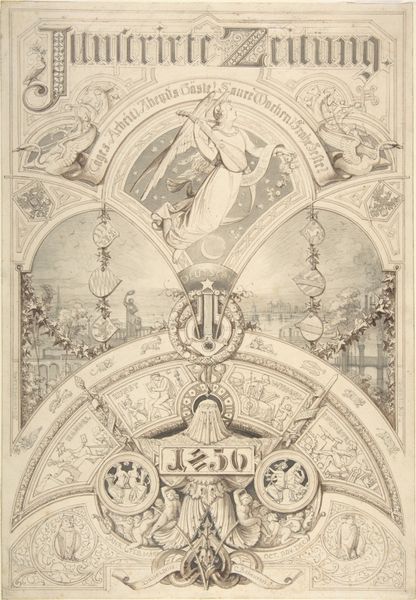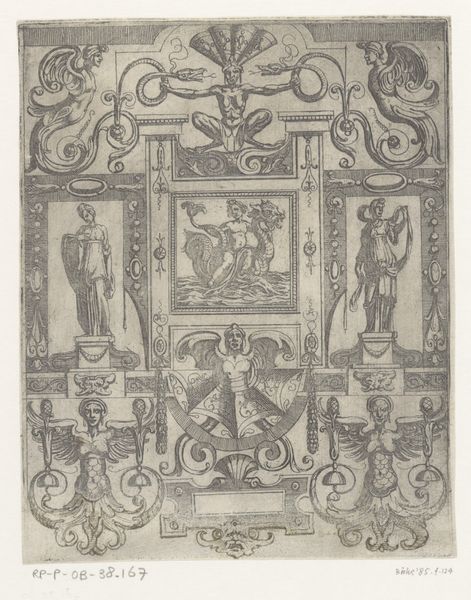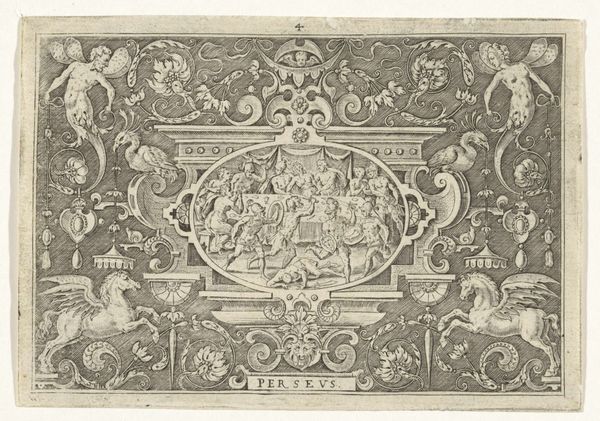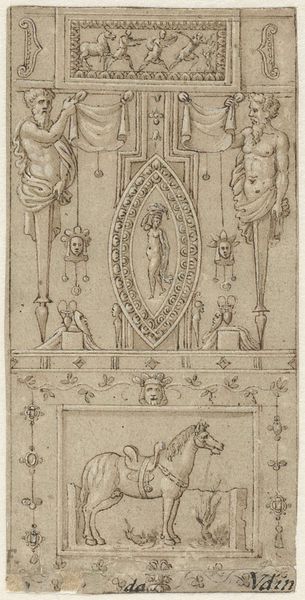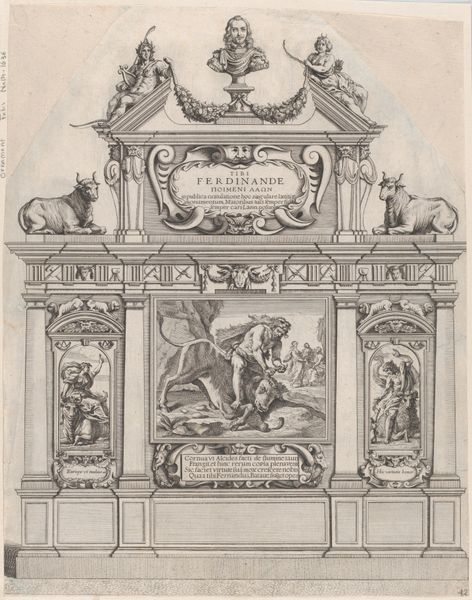
Minerva from the "Doria Grotesques" 1545 - 1555
0:00
0:00
textile, sculpture
#
allegory
#
carving
#
sculpture
#
textile
#
mannerism
#
figuration
#
text
#
11_renaissance
#
tile art
#
sculpture
#
history-painting
#
decorative-art
Dimensions: 12 ft. 6 in. × 13 ft. 3 in. (381 × 403.9 cm)
Copyright: Public Domain
Editor: This textile, "Minerva from the 'Doria Grotesques'," was crafted between 1545 and 1555 by Perino del Vaga. It’s incredibly ornate. The entire composition feels incredibly dense with classical references, and Minerva herself, standing so centrally, seems both powerful and a little constrained by the intricate details surrounding her. What stories do you think this work tries to tell? Curator: This tapestry is less about telling a specific narrative and more about constructing a particular vision of power and erudition through allegory and classical allusion. Think about the Doria family, who commissioned this piece. How might the tapestry serve to promote and legitimize their social standing? Editor: I see what you mean. So, beyond the beautiful craftsmanship, it's about communicating something about the patron’s values and status? Curator: Precisely. Mannerist art often aimed to impress through artifice and complexity, so how does the sheer abundance of imagery play into this aristocratic self-fashioning? Editor: The "grotesques," all those interwoven figures and decorations, certainly create an atmosphere of learnedness and wealth. Curator: And think about Minerva, the Roman goddess of wisdom and warfare, front and center. What did it mean to associate oneself with that kind of feminine power in the 16th century? Was it simply a nod to classical virtue, or was it perhaps something more complicated, relating to concepts of female rule and influence? Editor: So we can read Minerva not just as a symbol of wisdom, but potentially as a comment on female power during the Renaissance? I never thought of it that way. Curator: These tapestries, dense with symbolic layers, served as visual manifestos, articulating power and authority in very specific ways. Thinking about that helps us to view art through the lens of social history. Editor: This has completely changed how I see it. Thanks, that was super insightful.
Comments
No comments
Be the first to comment and join the conversation on the ultimate creative platform.
